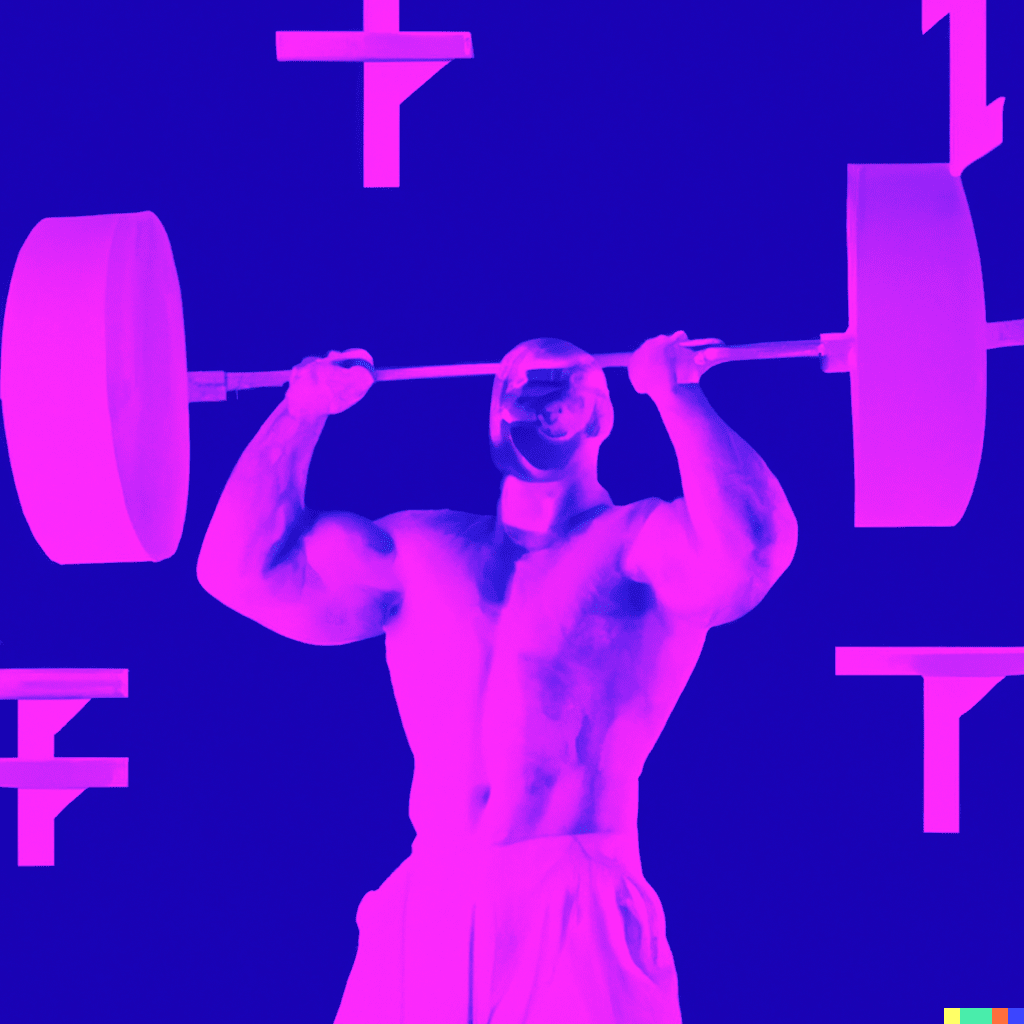In a world where fitness trends come and go, and where every month seems to introduce a new piece of gym equipment or a revolutionary workout routine, it’s easy to feel overwhelmed. Amidst this noise, a movement is growing, one that takes us back to the basics: minimalist bodybuilding. At its core, minimalist bodybuilding isn’t about doing less, but about focusing on what truly matters. It’s about stripping away the non-essentials and honing in on the foundational elements that lead to genuine, sustainable muscle growth. In a fitness era dominated by complexity, the allure of such simplicity is undeniable.
The Philosophy Behind Minimalist Bodybuilding
When I first stumbled upon the concept of minimalist bodybuilding, it felt like a breath of fresh air. The modern gym culture, with its endless array of machines, supplements, and routines, had always felt a tad excessive to me. But here was a philosophy that resonated with my own beliefs in other areas of life, from decluttering my living space to simplifying my daily routines.
At the heart of minimalist bodybuilding is the value of simplicity. It’s not about cutting corners or seeking shortcuts. Instead, it’s about understanding that our bodies, in many ways, are like finely tuned instruments. They respond best when we focus on fundamental, effective movements, rather than getting lost in the myriad of options available.
This brings us to the principle of quality over quantity. In my early days of training, I’d often find myself hopping from one machine to the next, convinced that more was better. But over time, I realized that I was spreading myself too thin. By trying to do everything, I was mastering nothing. Minimalist bodybuilding taught me to prioritize. Instead of juggling ten different exercises, why not focus on the three or four that truly deliver results? It’s about recognizing the movements that offer the most “bang for your buck” and dedicating yourself to them.
In essence, minimalist bodybuilding is a return to the roots of physical training. It’s a reminder that sometimes, in our quest for progress, we need to take a step back and focus on the basics. After all, it’s often in simplicity that we find the most profound results.
Benefits of a Minimalist Approach
In my journey through the world of fitness, I’ve tried various training methodologies, from high-intensity interval training to endurance-based workouts. But nothing has resonated with me quite like minimalist bodybuilding. The beauty of this approach lies not just in its simplicity, but in the tangible benefits it offers.
One of the first things I noticed when I adopted a minimalist approach was the speed of my recovery. By focusing on a select few exercises, my body wasn’t constantly playing catch-up. I wasn’t waking up with that all-too-familiar soreness that used to plague me after those marathon gym sessions. Instead, I felt rejuvenated, ready to tackle my next workout with gusto.
This leads to another significant advantage: a reduced risk of overtraining and injuries. In the past, I’d often push myself to the brink, mistakenly believing that pain was an indicator of progress. But minimalist bodybuilding taught me the value of listening to my body. By doing fewer exercises, I could pay more attention to my form, ensuring that each rep was executed with precision. This not only minimized the strain on my joints and muscles but also drastically cut down my injury downtime.
The clarity that comes with a minimalist approach cannot be overstated. With fewer exercises to juggle, I found myself achieving a greater level of focus and mastery over each movement. Every squat, every deadlift became an opportunity to perfect my technique, to connect with my body in a way I’d never done before.
In today’s fast-paced world, who doesn’t want to be more time-efficient? Minimalist bodybuilding is the epitome of achieving more in less time. Gone were the days of spending hours at the gym. Now, each session was concise, purposeful, and incredibly effective.
Essential Exercises for Minimalist Bodybuilding
When it comes to minimalist bodybuilding, the emphasis is on exercises that engage multiple muscle groups simultaneously. These are often referred to as compound movements, and they form the backbone of any minimalist training regimen.
Squats: Often dubbed the king of all exercises, squats are a full-body workout. They primarily target the quads, hamstrings, and glutes, but also engage the core and lower back. Every time I descend into a squat, I’m reminded of its power and efficiency.
Deadlifts: Another heavyweight in the world of compound movements. Deadlifts work the entire posterior chain, from the traps down to the calves. It’s a raw, primal exercise that epitomizes the essence of minimalist bodybuilding.
Bench Press: The go-to exercise for building a strong and defined chest. But its benefits don’t stop there. The bench press also works the shoulders and triceps, making it a multifaceted movement.
Pull-ups: A true test of upper body strength. Pull-ups target the lats, biceps, and upper back. Every time I pull myself up to that bar, I feel a sense of accomplishment that few other exercises offer.
While compound movements are the stars of the show, we shouldn’t completely disregard isolation exercises. In a minimalist routine, they play a supporting role, helping to target specific muscles that might need extra attention. The key is to use them judiciously, ensuring they complement, not overshadow, the primary exercises.
Crafting a Minimalist Workout Routine
When I first embarked on my minimalist bodybuilding journey, I was overwhelmed by the plethora of workout routines available. It took some trial and error, but I eventually found a rhythm that resonated with my goals and lifestyle.
Determining workout frequency is crucial. I had to decide between full-body vs. split routines. Initially, I gravitated towards full-body workouts, targeting all major muscle groups in a single session. This approach allowed me to hit the gym fewer times a week while still ensuring each muscle group received adequate attention. However, as I progressed, I experimented with split routines, dedicating specific days to specific muscle groups. This allowed for more focused training and longer recovery periods for each muscle group.
Another pivotal aspect was balancing push and pull movements. For every pushing exercise like the bench press, I ensured there was a counteracting pulling exercise, like the pull-up. This balance is vital for muscular symmetry and preventing imbalances that could lead to injuries.
The importance of incorporating adequate rest and recovery periods cannot be overstated. Minimalist bodybuilding isn’t about pushing the body to its limits every single day. It’s about training smart. I learned to listen to my body, giving it the rest it needed to recover and grow. Some days, this meant taking a complete break, while on others, it involved light activities like walking or stretching.
Nutrition for the Minimalist Bodybuilder
Just as with training, I found that simplicity is key when it comes to nutrition. The world of dieting is vast and often confusing, but I was determined to find a minimalist approach that complemented my training.
Simplifying my diet became my mantra. I shifted my focus to nutrient-dense whole foods. Instead of getting bogged down by the latest diet trends, I prioritized foods that have stood the test of time: lean meats, fish, vegetables, fruits, nuts, and seeds. These foods provided me with all the essential nutrients without the need for complicated meal plans or calorie counting.
The importance of protein was another revelation. As a bodybuilder, protein is the building block for muscle repair and growth. I incorporated various sources into my diet, from animal-based options like chicken and beef to plant-based sources like lentils and chickpeas.
The world of supplements can be a rabbit hole. But in true minimalist fashion, I asked myself: What’s truly essential? While some supplements can be beneficial, many are superfluous. I narrowed down my list to a few basics: a good quality protein powder for post-workout recovery, creatine for enhanced performance, and a multivitamin to fill any nutritional gaps. Everything else was just noise.
The Mindset of a Minimalist Bodybuilder
When I first embraced minimalist bodybuilding, I quickly realized it was as much a mental shift as it was a physical one. At its core, it’s about embracing patience and consistency. In a world where instant results are often sought after, I had to learn the value of slow, steady progress. Each workout, each meal, became a step towards my goals, no matter how small.
Another challenge was avoiding the allure of the “latest and greatest” fitness trends. Every other week, there’s a new workout program, a new piece of equipment, or a new diet that promises miraculous results. But I’ve found that sticking to the basics, to what’s been proven to work over time, yields the most sustainable results.
Furthermore, the value of introspection became evident. It’s not about blindly following a routine but continually assessing and refining your approach. What worked for me a month ago might not work today. By staying attuned to my body’s signals and adjusting accordingly, I ensured my training remained effective and enjoyable.
Challenges in Minimalist Bodybuilding and Overcoming Them
Like any journey, minimalist bodybuilding comes with its set of challenges. One of the most pervasive is the misconception that more is always better. Whether it’s more time in the gym, more exercises, or more supplements, there’s a prevailing belief that more equates to better results. Over time, I’ve learned that it’s not about quantity, but quality. It’s about making each rep, each set, and each workout count.
Another challenge is dealing with societal pressures and gym culture. When everyone around you is chasing the next big thing in fitness, sticking to a minimalist routine can sometimes feel isolating. But I’ve found solace in the results I see and the inner peace this approach brings me.
Lastly, staying motivated when routines seem repetitive can be tough. But I’ve learned to find joy in the repetition, viewing it as a form of meditation. Each repetition, each workout, brings me closer to my goals, and that in itself is a powerful motivator.
Conclusion
Minimalist bodybuilding is more than just a training approach; it’s a philosophy, a way of life. It’s about stripping away the unnecessary and focusing on what truly matters. As we navigate the complexities of modern life, this approach offers a beacon of simplicity and efficiency. I encourage all readers to evaluate their current routines, consider where they might simplify, and experience for themselves the transformative power of minimalist bodybuilding. Embrace the essentials, and watch as your body and mind transform in harmony.









